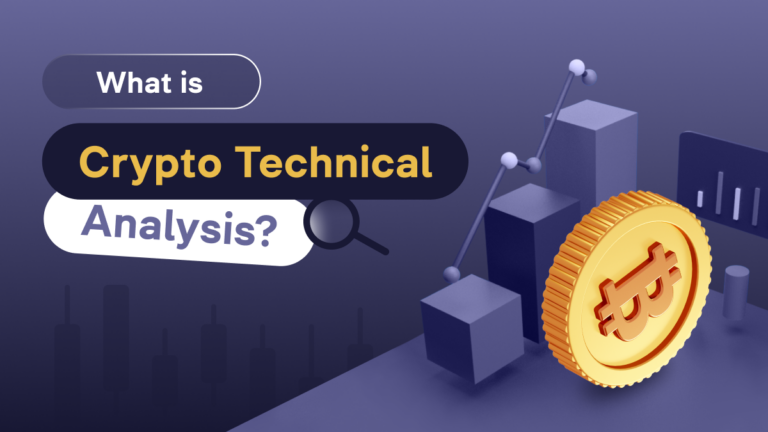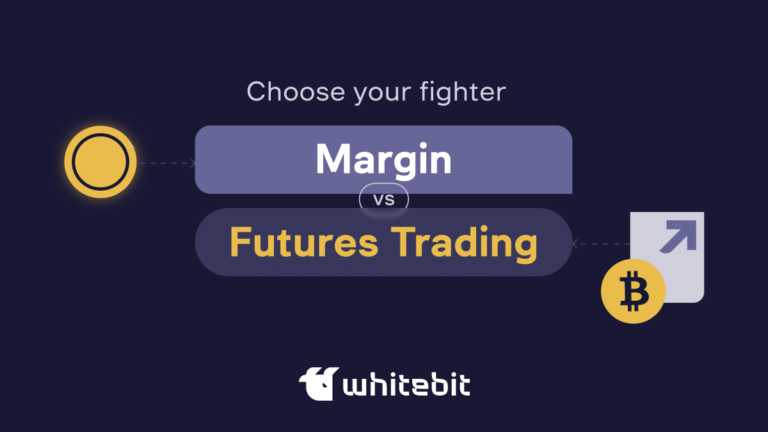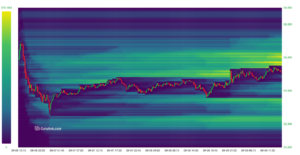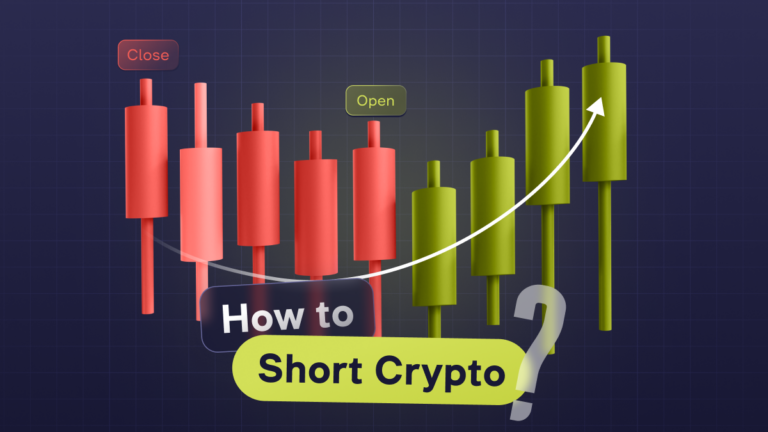What is Liquidation in Crypto Trading and How to Avoid It?

Content
Every trader, especially a beginner, fears one word — liquidation. Cryptocurrency volatility can reach extreme values, and the liquidation risk becomes a constant companion. Trade cryptocurrencies require special attention to risk management and an understanding of the market mechanisms because one mistake can lead to the loss of all assets. However, knowing how liquidation works and what tools are available for risk management can significantly increase the chances of success. Let’s understand the details of this process and learn how to minimize potential losses.
Crypto Liquidation Definition
Liquidation is the process of a trader’s position being forcibly closed by an exchange when his margin funds become insufficient to maintain an open position. Margin trading involves using borrowed funds to increase the size of positions, which increases both the potential profit and risk of liquidation on exchanges. This occurs due to a strong asset price movement in the opposite direction, especially when leverage is used. Liquidation BTC protects the exchange from outstanding losses, but it can mean a total or partial loss of invested funds for the trader.
How Does Liquidation Happen?
The liquidation value occurs when the value of the asset, in which the trader invested with the use of leverage, sharply moves in the opposite direction from his position. In a margin trading environment, such price changes can quickly lead to insufficient funds to maintain a position. Live crypto prices are often unpredictable, and their sharp fluctuations can accelerate asset liquidation. In this case, the trader’s margin funds become insufficient to maintain an open position. The cryptocurrency exchange automatically closes the position to prevent further losses, as the trader’s assets no longer cover his debt to the exchange. This process happens instantly, and the trader loses all the funds deposited to secure the transaction.
Example of BTC Liquidation Heatmap
A crypto liquidation heatmap is a useful tool for traders to evaluate the zones of the largest liquidations and to understand where market participants lose their positions in case of sharp price changes.
Liquidation Heatmap, source: coinank.com
Heatmaps of this nature depict levels where significant process of liquidation of traders on cryptocurrency exchanges have occurred, especially those using margin trading.
What is depicted in the screenshot:
- The left color scale (green to purple) shows the intensity of liquidations. Green areas depict high liquidation volumes, while purple areas indicate relatively low activity.
- The X-axis is a timeline that shows price changes over time (dates and times are shown on the time axis).
- The Y-axis is the range of Bitcoin prices at the time of liquidation. Prices range from $50,600 to $59,000, showing the price dynamics change over this period.
Highlights of the analysis:
- Sharp price drop: The beginning of the map (left) shows a sharp drop in price from around $59,000 to around $52,000. There are active liquidations in this area – the bright green and yellow areas indicate that many traders with margin positions suffered liquidations as the price fell.
- Consolidation: After the initial drop in price, a consolidation (sideways price movement) is seen between the levels around $52,000 and $56,000. During this period, liquidations were less intense, as reflected by the predominance of blue and purple colors.
- Periodic bursts of liquidations: Beginning in 08-09, areas of sharp green and yellow patches can be seen that indicate temporary spikes in liquidations at around the $54,000-$56,000 level. These areas are often associated with short, sharp price moves up or down, which may have caused traders in opposite positions to liquidate.
Types of Liquidation in Trading
Several types of liquidation in trading can be applied depending on the trading conditions and the level of margin utilization. Let’s consider each of them.
Voluntary Liquidation
Voluntary liquidation meaning: when a trader closes his or her position to lock in a loss or profit. This can be a strategic move to minimize losses if the market moves in an undesirable direction, or vice versa, to lock in profits while the asset price is profitable. Voluntary liquidation allows a trader to retain control of his position and avoid the automatic closing of positions by the exchange. This may occur when the trader realizes that the margin level is approaching a critical level and prefers to close the position before the exchange starts forced liquidation.
Forced Liquidation
Forced liquidation is when the exchange closes a trader’s position automatically when the margin level becomes insufficient to maintain the open position. This happens when the price of an asset moves against the trader’s position to such an extent that the trader’s capital cannot cover the losses. Forced liquidation protects the exchange from the trader’s outstanding losses and closes the position when the liquidation margin level is reached. This can be a full or partial liquidation, depending on the situation and exchange conditions.
Partial Liquidation
Partial liquidation is a process whereby the exchange liquidates only a portion of a trader’s position rather than the entire position. This mechanism restores the required margin level, allowing the trader to retain a portion of their position and continue trading. Partial liquidation helps a trader avoid a full close out and can allow time to adjust positions. For example, when the price of an asset falls, the exchange may liquidate 20-30% of a position, allowing the remaining assets to be preserved and the position to be held in the event of a further market reversal.
Total Liquidation
Full liquidation occurs when the exchange closes the trader’s entire position. This happens when the price of an asset moves so strongly in the opposite direction of the trader’s position that the remaining funds can no longer support margin requirements. The trader receives a margin call – a warning to strengthen his position. In the case of a full liquidation, the trader loses all the funds he has deposited as a margin, and his position is completely closed. Full liquidation is the most critical scenario and can occur when market volatility is extreme, or leverage is too high.
Long and Short Liquidations
Long liquidation occurs when a trader opens a long position (long), expecting the price of an asset to rise, but the price moves in the opposite direction, and the asset falls. As a result, if the price drops below a certain level, the long position can be liquidated automatically.
Short liquidation occurs when a trader opens a short position, expecting the price of an asset to fall, but the market moves in the opposite direction, and the asset’s price rises. In this case, if the price rises above a certain level, the short position will also be liquidated, leading to losses for the trader. In some situations, a short squeeze can occur when the mass closing of short positions increases the price growth, significantly increasing short traders’ losses and accelerating their positions’ liquidation.
Both long and short liquidations occur according to the same mechanism but in opposite directions, depending on which outcome the trader bets on.
Crypto Futures Liquidation
Liquidation on futures occurs when a trader cannot maintain his margin position due to price movement against him. Futures trading of crypto often involves leverage, increasing potential profit and risk. If the asset’s price moves in the opposite direction of the open position and the margin requirements are no longer met, the exchange forcibly closes the position. This prevents further losses and protects the exchange’s funds or other participants. Liquidation on futures can be either full or partial, depending on the terms and conditions of the exchange.
How to Avoid Liquidation?
Use a Stop-Losses
Always place Stop-Loss orders on your positions to minimize the risk of liquidation. This will help you automatically close the trade if the price reaches a certain loss level. Different order types on the exchange, such as limit and market orders, allow you to flexibly manage your positions and react to market changes on time. This approach will protect your capital and prevent unexpected losses in case of sudden market movements.
Monitor Your Position
Regularly monitor your margin levels and the status of your positions. Do not let the margin level drop too low. If necessary, replenish your account or close part of your positions to stay in a safe zone and avoid forced closure of positions by the exchange. Sometimes, you can convert crypto into more stable assets to reduce risk and maintain sufficient margin levels in your account. In addition, many cryptocurrency exchanges provide a cryptocurrency liquidation calculator that allows traders to calculate the price of liquidating their positions in advance and manage risk more efficiently.
Decrease Leverage
Leverage trading, especially if it is high, increases the risk of liquidation. Use moderate leverage to reduce your risk, especially in volatile markets. Smaller leverage gives you more room for price movement without the threat of liquidation and allows you to manage your risk better.
Take Into Account Live Prices
Keep an eye on the market situation and analyze current prices to understand the market’s direction better. Knowing the market trend will help you make more informed decisions about entering and exiting positions, reducing the likelihood of liquidation.
Conclusions
Liquidation in crypto is one of the key concepts of margin trading in cryptocurrency, and understanding its mechanism helps traders manage risk and protect their assets from total capital loss. It is important to always carefully assess the level of leverage and keep a close eye on market movements. In addition, never forget the DYOR (Do Your Own Research) principle – your own market research and project analysis will help you make more informed decisions and reduce the probability of mistakes.
FAQ
Liquidation is simply when the exchange automatically closes your position due to a lack of funds to maintain it and prevent further losses.
Difference between bankruptcy and liquidation: Liquidation occurs when an exchange closes a position due to insufficient funds. Bankruptcy occurs when a person or company's assets no longer cover its debts.
To calculate the liquidation price, consider the initial margin, the amount of leverage, and the asset price movement. Formulas can vary from platform to platform, but the Bitcoin liquidation price can generally be found in the position information section.














